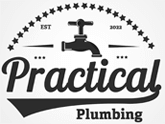A sump pump is an essential piece of equipment for maintaining the integrity and safety of your basement, especially if you live in an area prone to flooding or heavy rainfall. By removing water that collects in your basement, a sump pump can prevent costly water damage, mold growth, and structural issues. With so many models and features available on the market today, choosing the optimal sump pump for your home can be a daunting task. We are here to help guide you through the process, ensuring you make the right investment to protect your property.
Our professionals understand the significance of having a reliable sump pump, and we strive to provide you with the knowledge and expertise needed to make an informed decision. When choosing the right sump pump for your basement, several factors need to be considered, such as the type of sump pump, power source, capacity, and more. Each home’s specific needs and circumstances will determine the most suitable sump pump to invest in.
1. Assessing the Type of Sump Pump: Pedestal vs. Submersible
Pedestal and submersible pumps are the two primary types of sump pumps available on the market. Understanding the key differences between them is crucial in determining the most suitable option for your home.
– Pedestal Pumps: As the name suggests, a pedestal pump features a motor mounted on a pedestal above the sump pit. This design allows for easy access to the motor when maintenance is needed. Pedestal pumps are generally more affordable and can last longer than submersible units; however, they tend to be noisier and less aesthetically pleasing due to the exposed motor.
– Submersible Pumps: These pumps are designed to be fully submerged in the sump pit. Submersible pumps are generally more expensive than pedestal units but offer a quieter operation and a sleeker appearance since the entire unit is hidden in the pit. They are also built to withstand a watertight seal, preventing electrical short circuits and potential motor damage.
Our professionals can help evaluate your basement’s unique layout and requirements to determine the optimal sump pump type for your situation.
2. Determining the Right Power Source: Electrical vs. Battery Backup
While most sump pumps rely on electrical power to operate, it’s crucial to consider the availability of backup power options to keep your pump running during electrical outages.
– Electrical Sump Pumps: The majority of sump pumps are powered by your home’s electrical supply. When choosing an electrically powered unit, ensure it is compatible with your home’s electrical system and has a proper ground fault circuit interrupter (GFCI) outlet.
– Battery Backup: Battery backup sump pumps provide an essential safety net during power outages, enabling your pump to continue functioning and preventing basement flooding. These backup units can either be integrated with your primary electric sump pump, or they can be standalone units that automatically activate when the primary pump fails. Our professionals can recommend the right backup power solution based on your needs and budget.
3. Sump Pump Capacity: Factors to Consider
The capacity of your sump pump, or its ability to pump out water, is a critical factor in choosing the right unit for your home. Consider the following elements when determining the appropriate pump capacity for your needs:
– Basement Size and Layout: The size of your basement and the area that is vulnerable to water infiltration will determine the necessary capacity of your pump. A large basement may require a more powerful unit to effectively remove water.
– Water Table: If your home sits in an area with a high water table or experiences frequent heavy rains, you should consider investing in a sump pump with a higher capacity to handle the increased water pressure.
– Existing Drainage System: The efficiency of your home’s drainage system can affect the required capacity of your sump pump. A well-designed drainage system may allow for a smaller capacity pump, while an inadequate system may necessitate a more powerful unit.
Our professionals can perform a thorough assessment of your basement and its specific water management needs to recommend the most suitable sump pump capacity.
4. Additional Sump Pump Features to Consider
Beyond capacity and type, several other features can impact the effectiveness of your sump pump:
– Automatic Activation: Opt for a sump pump with an automatic activation switch to ensure your pump starts functioning as soon as water levels rise in the sump pit.
– Alarms: Some sump pumps come equipped with alarms that can alert you when the water level rises above a certain threshold, indicating potential pump failure.
– Dual-Pump Systems: For enhanced water removal capacity, consider a dual-pump system, which includes two sump pumps operating simultaneously or in succession to handle higher volumes of water.
Conclusion
Choosing the perfect sump pump for your basement is a critical decision that impacts the overall safety and well-being of your home. By considering factors such as type, power source, capacity, and additional features, you can be confident in making the best investment in your home’s protection from water damage and flooding.
Trust the expertise of our team at Practical Plumbing to guide you through the process of selecting, installing, and maintaining your sump pumps in Greeley, CO. Contact us today to schedule a consultation with our skilled professionals and begin safeguarding your home from water-related disasters.





